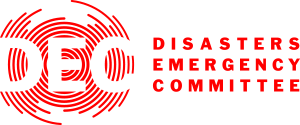
ResourceSpace has changed the way the DEC uses content, making it much easier for us to quickly make assets available both internally and externally during our emergency appeals.
Blog
25th June 2025

Your marketing assets are at the heart of your campaigns, but to get the most value from them, you need to know where they are and how to use them effectively.
For smaller teams this is relatively straightforward, but as you grow this becomes more and more difficult.
Effective marketing asset organisation is crucial for effective marketing campaigns, but how do you set yourself up for success, and how does enterprise Digital Asset Management help?
As marketing teams grow, staying organised becomes increasingly challenging, particularly when it comes to managing digital asset libraries.
What used to work for a small and centralised team often becomes chaotic as more people, projects and channels are added to the mix, combining fragmented storage systems, inconsistent file naming and duplicated or outdated assets.
One of the most common issues is losing track of where assets are stored, with teams resorting to saving files on desktops, cloud drives or email threads in lieu of a dedicated Digital Asset Management (DAM) system. This makes it hard to locate the most up-to-date version when it's needed. This lack of structure quickly undermines productivity and leads to a lot of wasted time trying to track down the correct assets when needed.
Without clear controls brand consistency suffers too, with marketing teams using outdated logos, imagery or messaging, which can dilute the impact of campaigns and confuse audiences. Version control becomes a major headache as well, especially when multiple people are working on the same asset or campaign.
So, as a marketing or DAM Manager, what can you do to manage your brand asset library more effectively?
Before you can get your digital asset library organised, you need to understand what you’re working with.
An audit will provide you with a clear picture of what assets you have, where they’re stored and whether they’re still relevant or usable. This process should involve identifying duplicates, outdated files and content that no longer meets your organisation’s brand or messaging standards.
As part of the audit, categorise the assets by type—such as photography, video, design files or documents—and highlight the various usage rights and expiry dates where necessary. You should also make note of where you’ve got content gaps, for example as a result of missing campaign assets, incorrect or inaccessible formats, or corrupted files.
After completing the audit, you should have a clearer understanding of what assets need to be archived, deleted, improved or created.
Once your assets are audited, the next step is creating a logical, consistent structure for how they’ll be organised. This includes defining your folder hierarchy, naming conventions and metadata taxonomy—all of which will shape how easily assets can be stored and found—and this structure should reflect how your marketing team works. For example, consider organising assets by campaign, content type, region or audience segment, and avoid overcomplicating things. Simplicity and clarity are key to long-term usability.
READ MORE: The 6 core metadata schemas explained
Equally important is setting up a metadata taxonomy that makes sense to team members. This includes defining keywords, categories and tags that align with your brand, campaign types and content needs. These controlled definitions help to maintain consistency, particularly when multiple contributors are involved in creating and sourcing assets.
Getting this structure right from the start helps ensure that, as your team and content library grow, you avoid losing control of your assets and becoming disorganised. It also supports better searchability and improved version control, while making it easier to maintain brand consistency.
Not all storage systems are created equally, and choosing the right platform is essential for keeping your marketing assets accessible and secure. While shared drives or cloud folders might work for small teams, they quickly become unwieldy as content volumes and contributors increase.
A dedicated Digital Asset Management (DAM) system gives you the structure, control and visibility you need to scale, facilitating your metadata standards, integrating with your existing tools, and providing version control, advanced search and user access permissions.
You should also choose a DAM platform that allows you to set granular access controls to protect sensitive or embargoed content.
READ MORE: The Digital Asset Management comparison checklist
A good DAM setup is not just about where content lives, but how it flows.
Clear roles, defined workflows and tailored permissions are essential to avoid confusion, bottlenecks and unauthorised use of assets.
Start by mapping out who does what. For example:
Different user groups, such as marketing teams, content creators, and external agencies, will need different levels of access and responsibilities.
Configuring upload workflows is particularly important, and these will guide users through metadata entry, consent confirmation and approval steps before content is made available within the DAM. This helps ensure that all assets meet your standards and are properly tagged from the start.
Even the most well-structured DAM system won’t deliver value if people don’t know how to use it—or worse, avoid using it altogether. Comprehensive training is key to ensuring your team understands how to use the DAM, but also buys into the reasons for implementing it in the first place.
READ MORE: 5 steps for creating an effective DAM training programme
Start with onboarding sessions for key users, tailored to their roles. For example, marketers might focus on searching and reusing content, while contributors need to understand upload workflows and metadata tagging.
You should also use regular refresher sessions to reinforce the value of these new processes, such as naming conventions, metadata standards and version control processes. However, this shouldn’t be one-way, so encourage feedback and be open to evolving the system if it’s not working for the users.
Implementing a new DAM system isn’t a set-and-forget process, and you need to regularly measure performance and usage to help refine your approach and make sure the system continues to meet your team’s evolving needs.
Assuming your DAM system offers reporting functionality, you can track key metrics such as upload volume, asset downloads, search queries and user engagement. These insights can highlight what’s working well, where content is underused or where there are content gaps. For example, you might find that teams are frequently searching for digital assets that don’t currently exist within the system.
With regular review and optimisation, your DAM will continue to drive value, improve efficiency and support strong, consistent content creation across every channel.
ResourceSpace is ideal for marketing asset organisation and optimisation, and we’re trusted by marketing teams across numerous industries for managing the entire lifecycle of their digital assets. Check out some of the testimonials below provided by marketing professionals:



To find out more about how ResourceSpace can transform your marketing asset workflow and processes, book a free 30-minute discovery session below, in which you’ll be taken through all of the key features and you’ll be able to ask the questions most important to you and your team.
#MarketingAssets
#BestPractice
#ResourceSpaceTips
#IndustryNews
#ProductUpdates
#BrandConsistency
#VersionControl
#AssetAudit
#MarketingEfficiency
#FileManagement
#ContentStrategy
#TeamCollaboration
#AssetLibrary